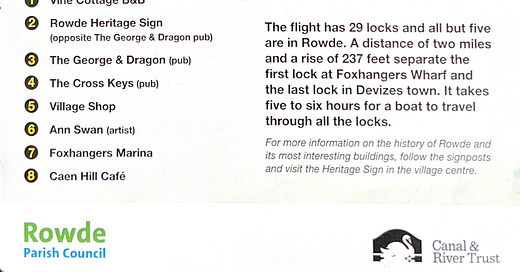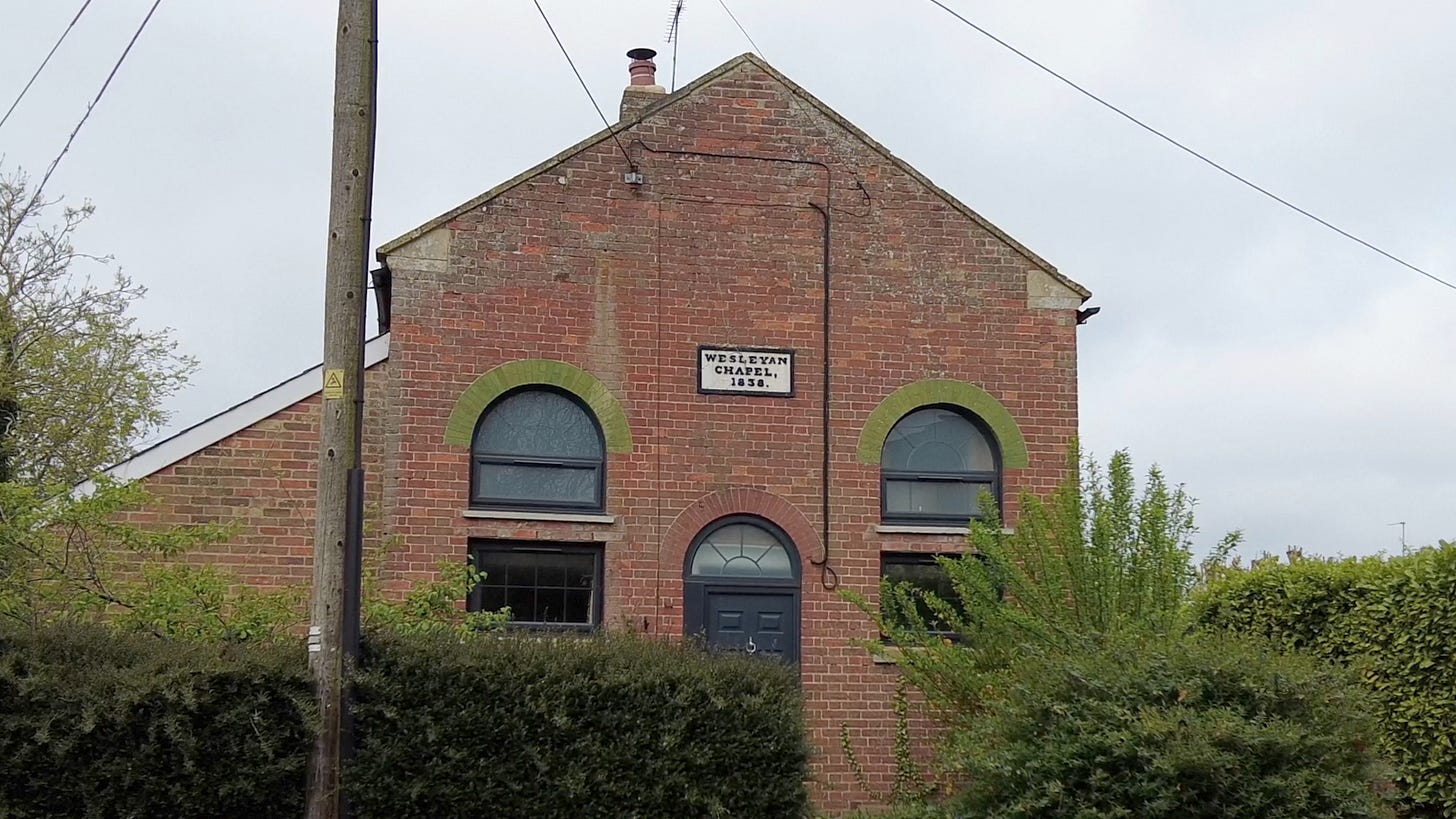Circular Walk, Rowde
It’s been some time since I picked up a leaflet describing a circular walk at Rowde, Devizes. It’s been scanned on my phone with the intention that one day I will walk this route.
That day has arrived!
I like circular walks. There is no need to worry about walking too far and not be able to get back to the car. Another advantage is you can start at any point on the map and complete the circle.
I park my car in lay-by close to Foxhangers Bridge (marked Marsh Lane Bridge on the above map), which spans the Kennet and Avon Canal, this becomes my starting point.
The bridge gives me a view of many of the twenty-nine locks on Caen Hill that ascends to Devizes. A quite remarkable feat of 18th century engineering. Today’s walk is not so much about the flight of locks, but the countryside walk and village.
Leaving the bridge behind, I head towards the village of Rowde. The road can be busy and it’s good to note that a footpath slightly away from the road takes me through Jubilee Wood. This is a plantation created in 2012 to celebrate the Diamond Jubilee of Queen Elizabeth II.
The once sapling trees are growing, although it will be many years before these tree kids reach, in human terms, teenage status. Growing trees takes time. It’s time, sadly, that we humans don’t have, and is probably a major reason why we cut trees down with less thought to replanting.
It’s a pleasant excursion as I walk along the edge of the plantation. The wood is open to explore and in years to come will be an amazing woodland. Trees fill the hillside leading up to the edge of Devizes, a walk worth doing for the views. You can drive to the top and use the pay and display car park for the Caen Hill top flight of locks. Refreshments can be taken at the cafe alongside the canal.
The young trees are doing a good job in taking in carbon dioxide and helping fill my lungs with clean, fresh air. Wonderful!
The village of Rowde
I enter the village. Can you hear the sound of the past? Hymns from a bygone age no longer emanate from the Wesleyan Chapel. Built in 1838 it’s now a private home bearing a plaque and solar panels on the roof. It’s standing well as it approaches its two hundredth anniversary.
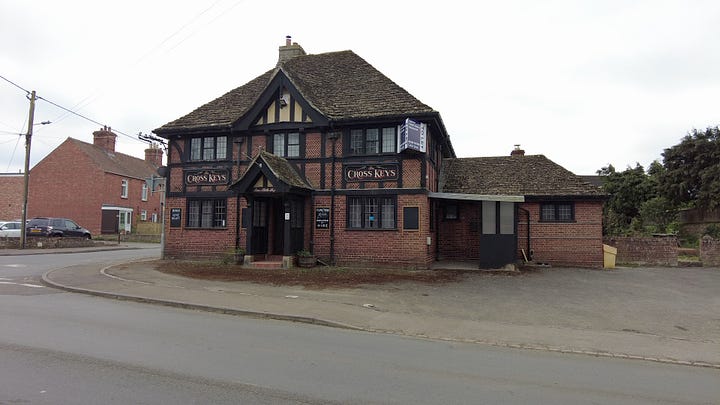
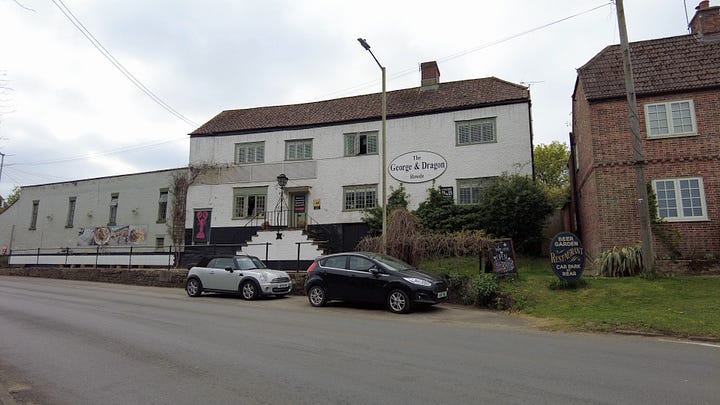
(click on an image for a larger version)
Upon reaching the T-junction of Marsh Lane, the road I have walked just walked along, there is a very deceiving building. The pub, Cross Keys, lies on the corner of the junction, looking for a new owner as it’s a victim of the demise of the hospitality trade in the UK. Although this pub easily looks to be 17th century it was actually built in 1938 to replace a very old pub on the site that burned down. The builder did an excellent job in ageing the design to fit in with the other properties around it.
There is a pub still alive in the village, The George and Dragon. This pub, though not as old as the one that was destroyed by fire, is from the 16th century. Its frontage was added in the late 18th century giving it a slightly newer look. If you like seafood, the George and Dragon has a good reputation for the seafood dishes on the menu.
The walk doesn’t take me the length of Rowde, but it does have the most interesting buildings, including St Matthew’s Church, which lies behind the George and Dragon, in this area.
St Matthew’s Church, Rowde
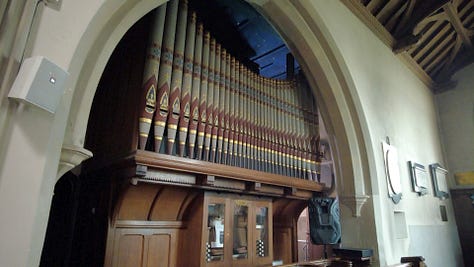
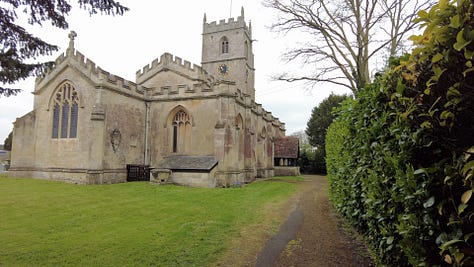
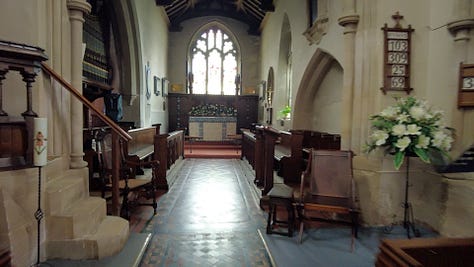
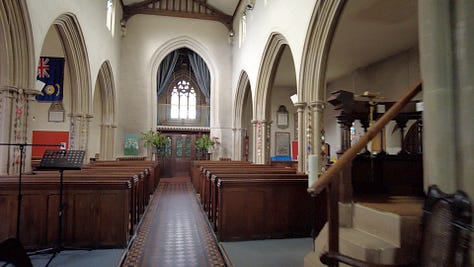

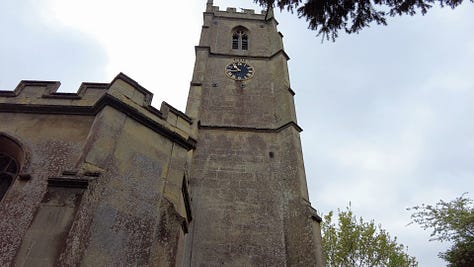
The church standing today consists of a 15th-century tower, the rest built in 1833 when the former church, St Mary’s, was demolished and rebuilt. There has been a church in Rowde for a long time. Records show there was priest here in 1086, only twenty years after the Norman invasion. There is also reference to a church in 1216 when Warner de Samford was given letters of presentation by the King.
Parish registers are complete from 1606 which gives a genealogists and historians valuable information. Not only that, churchwardens account books exist for 1676-1755 and 1825-1923.
From 1698-1704 details of occupations are listed in the parish register. Perhaps, surprisingly, fewer than half of the men were engaged in agriculture. Trades listed included: Clothier, weaver, worstedcomber, scribbler, wool-jobber, fellmonger, glover, cork-maker and cork-cutter. The wool industry was certainly part of everyday life in Rowde.
A brief history of Rowde
The name, Rowde, is thought to come from an Old English word - hreod - a word meaning reed or a place that grew reeds. Having just walked along Marsh Lane, maybe the name is a clue to that being true. Over the years the land would have been drained for agriculture removing marshy areas. Further along on this walk I will discover a small marshy area with reeds growing.
The Manor of Rowde was held in 1086 by Alfred of Marlborough. It eventually became royal property. Likely, King Henry II held it before he became King. He had seized the castle of Devizes only a few miles away and this may have coincided with him acquiring Rowde.
Rowde remained Crown property until the end of the 16th century when in 1591 it was sold by Queen Elizabeth I to Sir Edward Hungerford. The village had a succession of owners, passing through various Hungerford’s through inheritance. By 1760 the manor belonged to the Duke of Marlborough. In 1808 it left the dukes of Marlborough’s possession in, when it was sold to Wadham Locke of Ford House in nearby Bromham. Locke died in 1835
There is an enormous amount of history regarding ownership and to times when the land was leased to other wealthy persons. I won’t go into detail in this story.
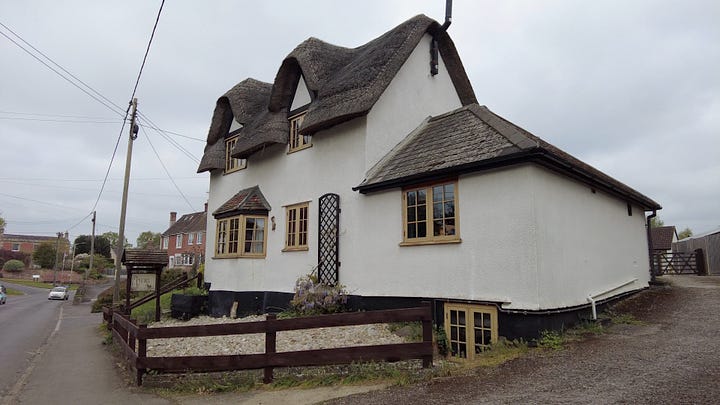
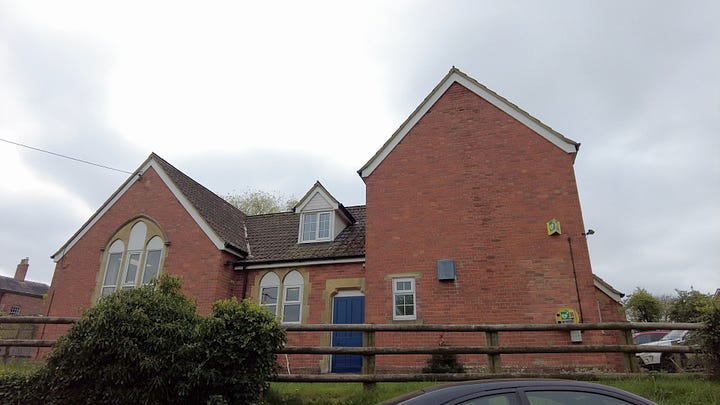
Heading back onto the main road upon leaving the church I walk onto Cock Road passing the village hall. This was once the Rowde Reading Room and opened in 1887. I am looking to turn left and head back towards the Kennet and Avon canal. My turning is coming up, Sands Lane, which is opposite the cutely names Bunnies Lane.
Heading towards the canal to make the circuit
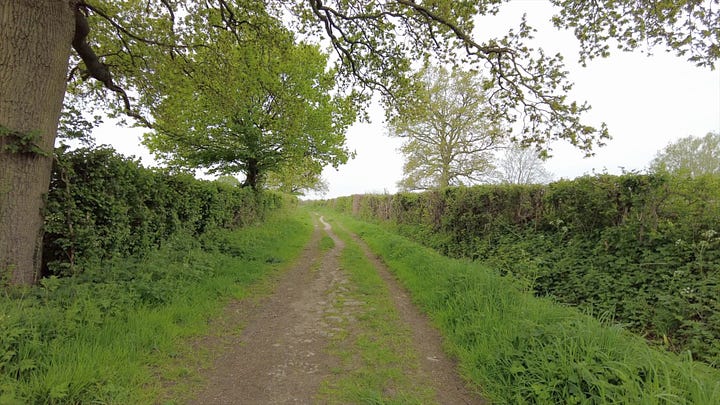
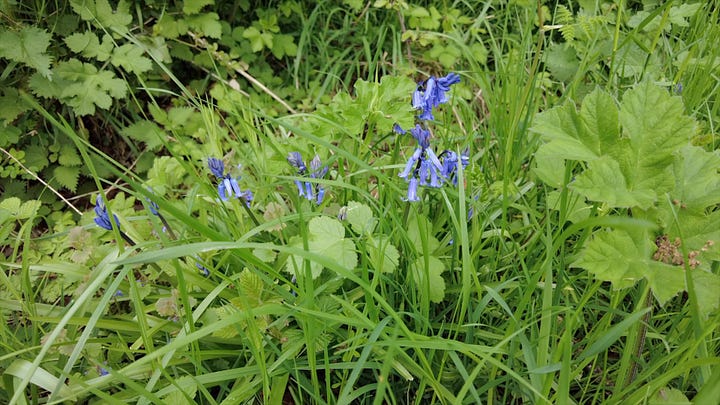
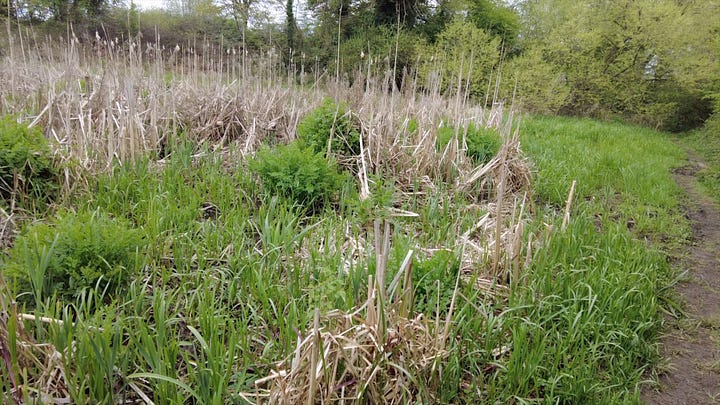
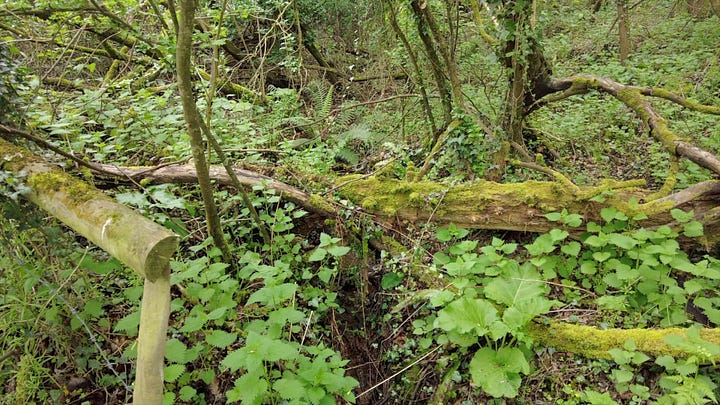
My route leads up to a community tennis court and recreation field and now I turn right onto a bridle way. This path eventually narrows and I need to walk on the edge of an open field at the end of which is a marshy area with reeds growing. Trying to keep my white trainers mud-free is looking tricky. However, with a little leaping and careful placement of my feet I manage to avoid a muddy outcome.
It’s amazing how micro environments form. Just past the swampy reeded area is a plank bridge across a stream. Formed in this little valley is an area that would be at home in a rain forest. Fallen branches are covered in moss and lichens cling to trees. It’s damp even on a dry day. I love these transitions in just a few steps from one environment to another. I need to climb a small slippery section to reach what turns out to be a holding pond for the canal. This looks like an area the ancient navvies built up to contain the waters of the Kennet and Avon Canal, necessitating my need to go uphill from my little rain forest.
To reach my crossing point, I need to head away from Devizes, the towpath is on the opposite side from my current route. A bridge isn’t too far in the distance and allows me to cross the water and start heading directly back to my starting point. Canada Geese look on as I cross the bridge. Humans are of no concern to them. They see thousands walking, cycling and boating along their waterway.
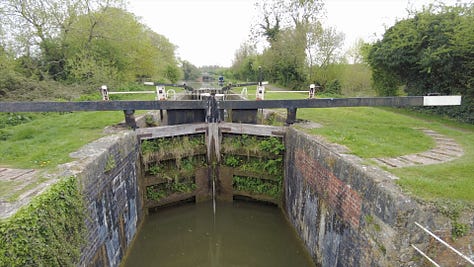
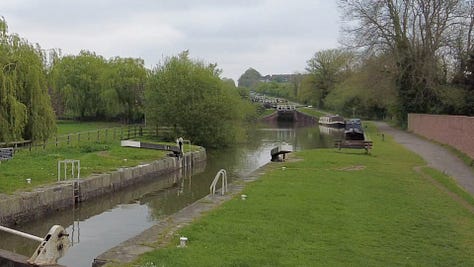
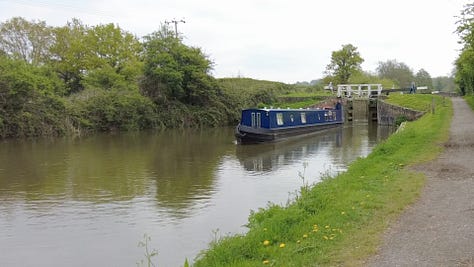
The towpath is route 4 of Britain’s national cycle routes and today there are a few cyclists making use of this long-distance route to enjoy safe cycling.
It’s time for a quick chat with a man who is sat on one of the seats provided. His dog wants to jump and and be fussed. I don’t mind. We talk about the lovely spring leaves on the trees and the weather. We Brits always talk about the weather!
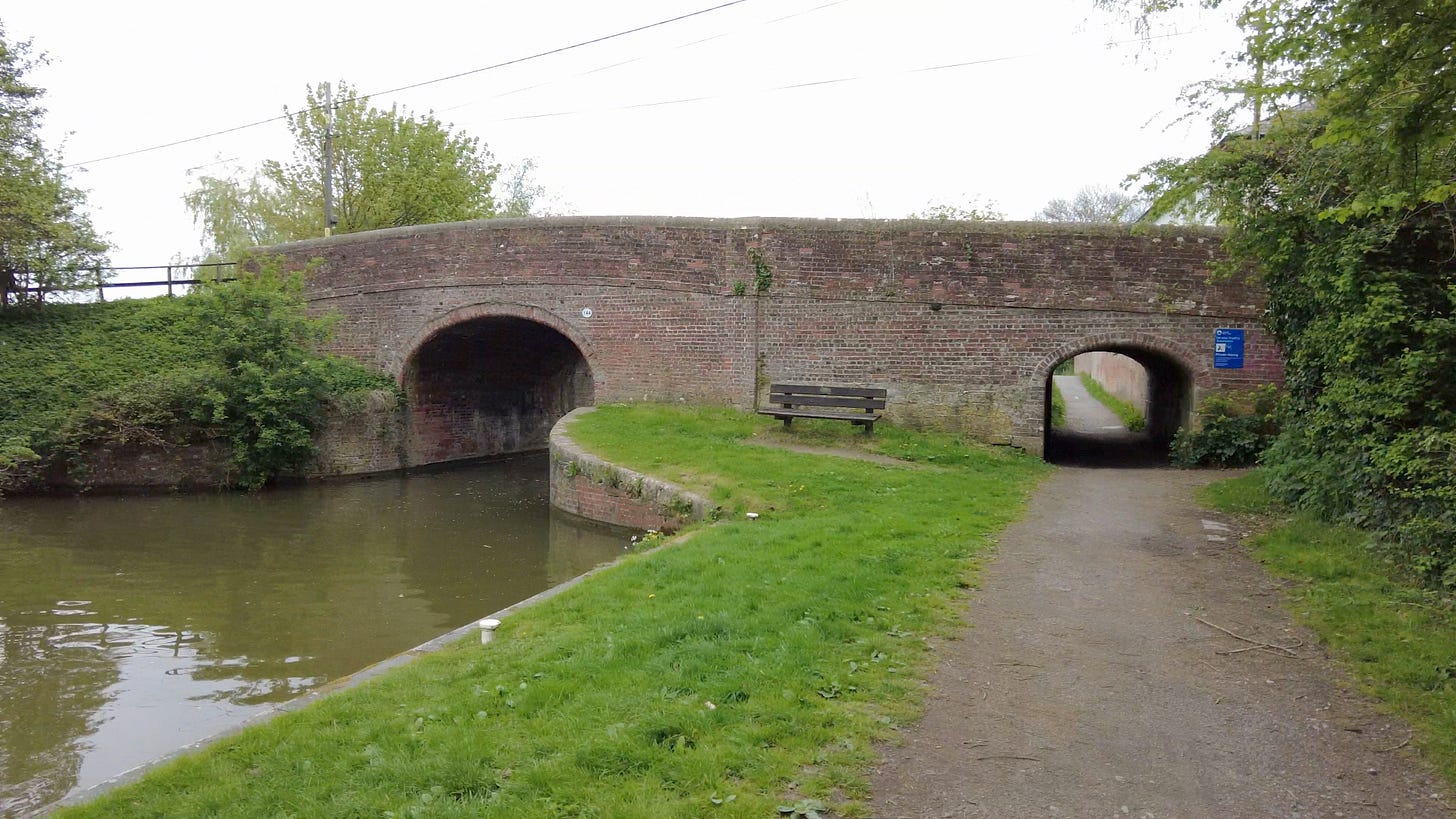
In the near distance I can see Foxhangers Bridge, my starting point on this very pleasant circular walk. The bridge has an extra arch over the towpath. History shows that this is where a tramway ran. The tramway allowed goods to be moved to and from Devizes to the canal at the bottom of the hill before all the locks were completed.
That’s it. I have now climbed the slope back onto Marsh Lane that crosses the canal by means of this bridge. It’s been a lovely walk and one that I would love to do again.
I hope you enjoy reading my stories. Please consider becoming a subscriber if you haven’t already subscribed. If you wish to become a paid subscriber you will be helping me to visit more places and write about them.


